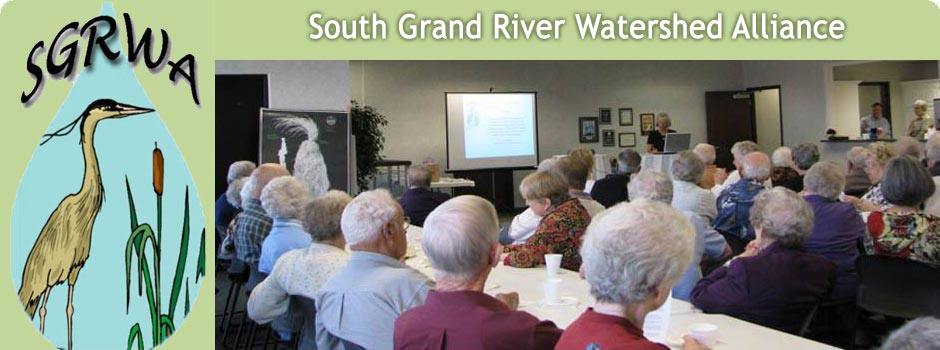The quality and the quantity of water in surface waters (streams, rivers, lakes and other water bodies) are connected with the quality and quantity of water in the aquifers (groundwater)? There are many threats to the quality and quantity of water in our aquifers. By understanding aquifers and knowing about these threats we can take actions to minimize or eliminate them and protect our essential water resource.
Aquifers are recharged by waters from the surface filtering down to them. Any pollutants such as fertilizers, pesticides, petroleum products, and heavy metals present in the surface waters are transported through the soil and rock structures to the aquifer. These pollutants enter the aquifer in varying degrees of concentration depending on the filtering qualities of the soil and rock as well as the type of vegetative cover. The long roots of native prairie grasses, flowers and trees serve as channels for the water to travel along to the aquifer. Some pollutants may be taken up by these plants. There are many types of soils and rocks, and some are more effective than others in filtering out contaminants before they reach the aquifer.
In addition to producing contaminants that affect groundwater, human activities also affect the quantity of water in aquifers. Water is pumped from aquifers for irrigating crops, to supply households with water and for industrial purposes. Pumping water stored in aquifers faster than they can be recharged reduces the quantity of groundwater while also increasing the amount of energy required to obtain it.
Riparian corridors vegetated with trees and native grasses and shrubs help slow stormwaters and facilitate the infiltration of water to aquifers. Replacing these corridors and natural landscapes with rooftops, streets, parking lots and the other impervious surfaces of expanding urbanization greatly reduces the recharging of aquifers.
Groundwater moves from areas of higher saturation to areas of lower saturation. So, when a lower saturation area is near a stream, lake or other water body, the groundwater becomes part of the flow and is once again surface water, thus contributing to the quantity of water in that waterway. When water tables drop, the amount of water in many streams may not only decrease, but some may dry up. When groundwater comes to the river or stream, it will be transporting contaminants that drained into the aquifer, thereby affecting the quality of the surface waters.
Additional information about protecting and restoring the quality and quantity of our watersheds is available at www.sgrwa.org
